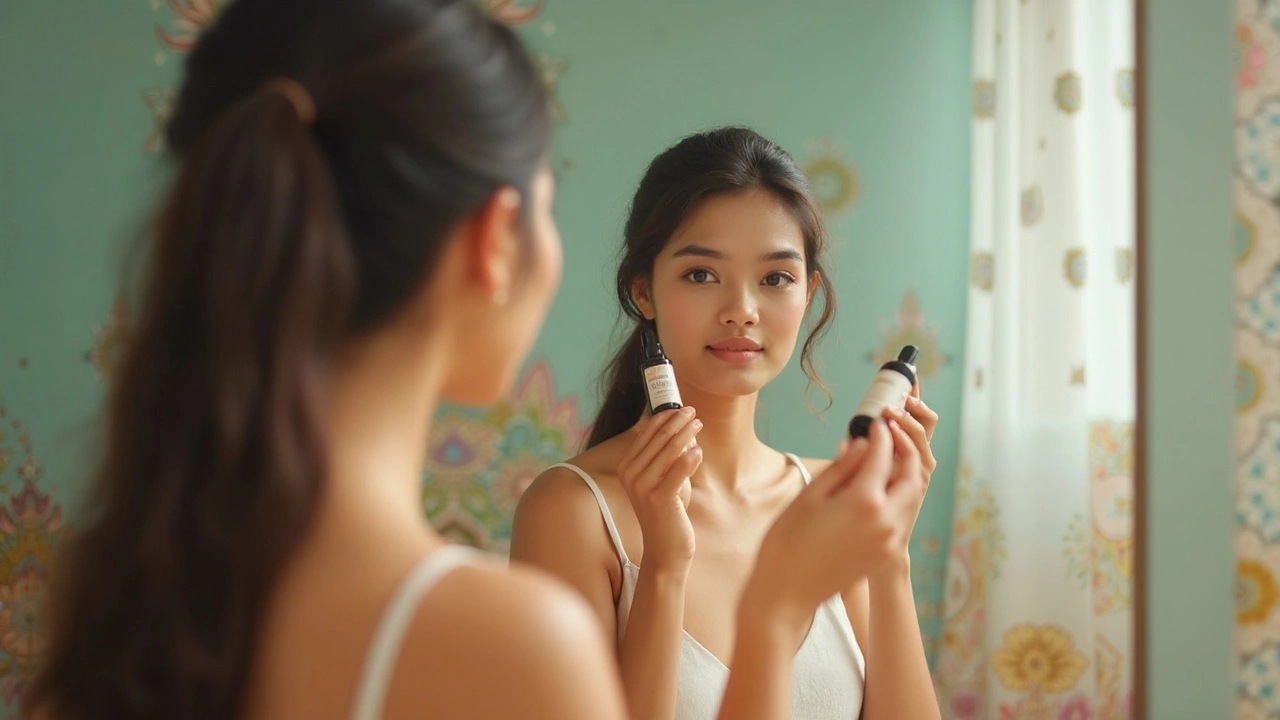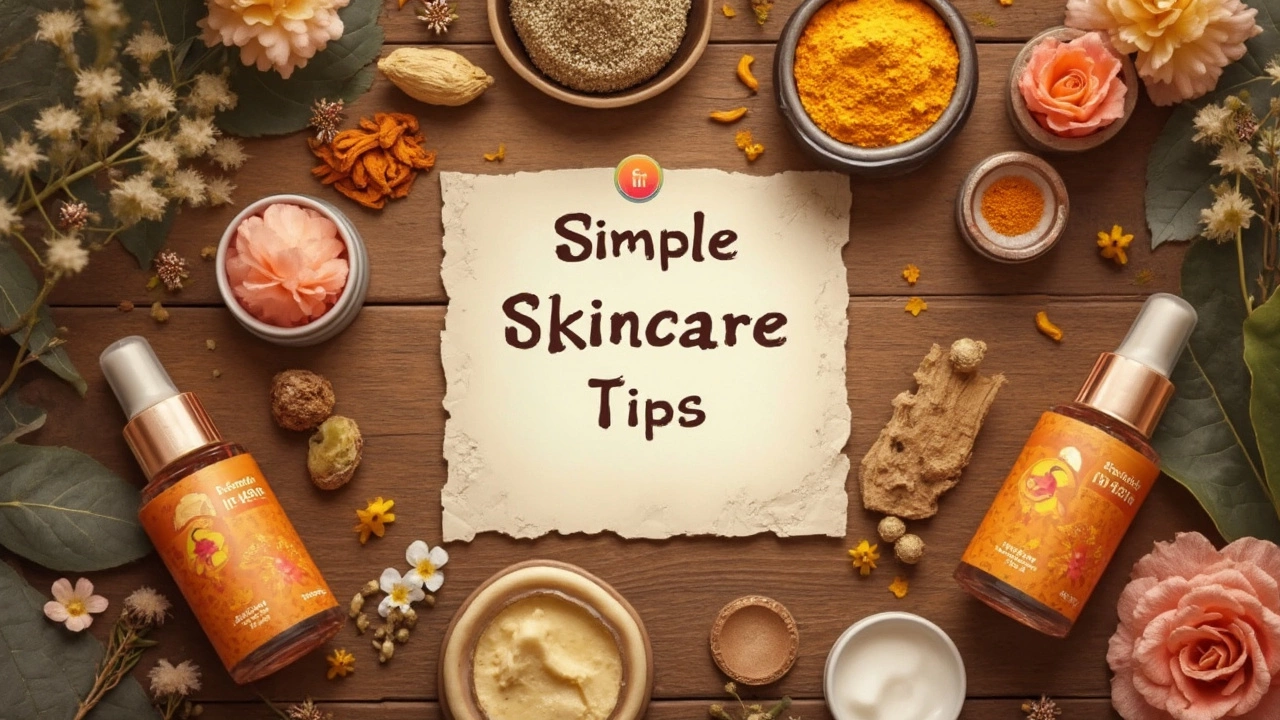
Picture this: you’re running late, staring at that tiny bottle of serum sitting between your usual cleanser and trusty moisturizer. You ask yourself, “Can I just skip the serum and get on with my day?” You wouldn’t be alone. The world of skincare sometimes feels like a second job—serums, gels, oils, creams—do we genuinely need every single step? Or is this just another way the beauty industry gets us to buy one more product we barely understand?
What’s the Real Difference Between Serum and Moisturizer?
Moisturizers and serums both promise healthy skin, but they play entirely different roles. A moisturizer’s main gig is sealing in moisture and creating a barrier, locking everything in for the day (or night) ahead. Think of it as Tupperware for your face. On the flip side, serums are the skinny superheroes in the lineup—they’re packed with highly concentrated ingredients (like hyaluronic acid, vitamin C, or niacinamide) designed to target specific skin issues. They usually have a thinner, almost watery texture so they can sink deep, working where they’re needed most.
Ever noticed how serums always seem to come in much smaller bottles than moisturizers, yet somehow cost more? That’s because they’re potent and meant to deliver a smaller, targeted punch. According to a 2024 consumer survey by Mintel, serums now make up over one-fifth of the “active skincare” market, especially for women aged 24 to 36. People want quick, real changes—brightness, hydration boost, fewer lines—and serums claim to get you there faster than any lotion or cream.
A moisturizer, though, works at the surface. Its combo of humectants (think: glycerin), emollients (oils), and occlusives (like petrolatum) doesn’t just soften the skin, it also helps your skin barrier stay chill during hot Aussie summers or wild winter winds in Sydney. The skin’s natural protective wall—yep, we call it the barrier—needs barrier support to block nasty pollutants or allergens out, and keep water in. Moisturizer is like giving your skin that extra safety net.
While both products can contain similar ingredients, the concentration and the way they’re delivered to the skin are totally different. So, if you’re thinking of using them interchangeably, you’ll want to think twice, especially if you have goals like banishing blemishes, fading dark spots, or smoothing fine lines.
Can You Actually Skip the Serum? What Happens If You Do?
Here’s the brutal truth: You can skip the serum and still have happy, hydrated skin—especially if your moisturizer is loaded with good stuff. But here’s the catch: you might be missing out on extra benefits that a serum can provide. Serums pack in things like retinol to fight wrinkles or vitamin C to amp up brightness. If your skin isn’t dealing with specific dramas (think stubborn pigmentation, frequent breakouts, or visible aging), skipping serum might not matter that much.
But let’s get specific. Got dry skin that flakes under makeup no matter how much cream you slather on? A serum with hyaluronic acid or glycerin can make a wild difference because it draws water and holds it, almost like giving your skin cells a big drink before sealing the goodness in with moisturizer. On the other hand, if your moisturizer already has those same effective humectants or active botanicals at a solid concentration, it’s sort of like a serum-and-moisturizer cocktail.
Here’s an interesting tidbit: A study published in the Journal of Cosmetic Dermatology (Nov 2023) compared people using just moisturizer versus those who added a vitamin C serum. The serum group had a 25% reduction in visible brown spots after three months. The moisturizer-only group saw maybe half that effect. Are these results going to be dramatic overnight? Not quite. But if specific results matter to you, skipping the serum might feel like settling for "good enough" instead of "wow."
Of course, not everyone needs every fancy product. If your skin is pretty chill—balanced, not reactive, not super dry or oily—you could go without serum. Aussies living at the beach, often dealing with sun exposure, wind, and dry air, might see a noticeable boost from layering a hydrating serum under their sunscreen and moisturizer—just saying.
Now, there’s also the camp who simply hates sticky, heavy feeling on their faces once the temperature rises above 26°C (which, let’s be honest, is most summer days in Sydney). Many modern moisturizers come “serum-infused,” packed full of actives, so you can get some of the payoff without adding any extra steps. If that’s appealing, scan ingredient lists for vitamin C, niacinamide, ceramides, or peptides. It feels like cheating, but it totally works for the low-fuss crowd.

Who Actually Needs Serum? Signs Your Skin Might Benefit
Not everyone’s going to fall in love with serums, but sometimes your skin will pretty much beg for more attention than just moisturizer alone. How do you know? Look for a few classic SOS signs:
- Breakouts. If adult acne won’t quit, niacinamide or salicylic acid serums can help tame red spots and calm inflammation better than most creams.
- Cloudy, "blah" skin. Dullness that lingers even after a good night’s sleep? Vitamin C serums give you the bright, glowy look fast.
- Uneven tone or dark marks. Hyperpigmentation from sun love (or hate)? Serums with tranexamic acid or licorice root hit those dark spots much harder than a basic cream ever could.
- Tight, angry, post-windburn skin. Hyaluronic acid or peptide serums dive deep to rehydrate and strengthen better than surface-level moisture alone.
- Fine lines sneaking in. Retinol and peptide serums are like little wrinkle-fighters, encouraging bouncier, plumper skin under your moisturizer's safety net.
- Living it up outdoors? Sydney’s sun and salt can cause some serious oxidation damage. Antioxidant-packed serums offer more protection from environmental nasties than most everyday lotions.
Think of your skin like a house. Moisturizer fixes cracks in the walls and locks the front door. A serum rewires the whole house or even paints the interior a new color, depending on what kind you use. You don’t need both to live there, but when things go wrong, having both helps get things back to perfect much faster.
It’s also super important to trust how your skin actually feels. Some folks find that layering on several products is a recipe for redness, clogging, or breakouts. Sensitive skin types, especially, might get all the glowy benefits they want with just one product—serum or moisturizer, rather than both.
Simple Tips to Streamline (Or Level Up) Your Skincare Routine
If you just want things simple and effective, check your moisturizer’s ingredients. Look for at least two hardworking actives, like hyaluronic acid, ceramides, vitamin C, or niacinamide. If you spot these in the top ten on the list, your moisturizer is already pulling some heavy weight—a bonus for the “less is more” crew.
The real trick? Consistency. According to a 2025 skincare habits survey of 4,200 Aussies by YouGov, over 68% of people often skip a step like serum or sunscreen because they’re too tired or running late in the morning. But those who stuck with even a two-step routine (cleansing and moisturizing regularly) had healthier-looking, more hydrated skin on average. So, while serum is nice, sticking to whatever routine feels realistic for you always matters most.
Here are a few simple ways to play it smart:
- If you’re under 25 and not battling specific issues, a gentle cleanser and moisturizer with SPF is usually enough.
- For 25-40, adding a serum with antioxidants or hydrators at night can help block early signs of aging from sun and stress.
- After 40? Boosting with peptides, retinol, or deeply hydrating serums can really enhance the effect of a basic moisturizer, especially if your skin feels parched or tired.
Here’s a handy comparison of common active ingredients in serums vs moisturizers:
| Active Ingredient | Common in Serum | Common in Moisturizer |
|---|---|---|
| Hyaluronic Acid | High concentration (1-2%) | Lower concentration (<1%) |
| Vitamin C | 15-20% | Rare, usually <5% if present |
| Retinol | 0.3-1% | Rare, trace amounts |
| Niacinamide | 5-10% | 1-3% |
| Ceramides | Low | High |
If you want that “I just got a facial” glow but can’t be bothered for a five-step process every day, focus on the right products for your skin, not every product. And don’t forget, SPF isn’t optional—Sydney sun doesn’t mess around.
For the skin minimalist, going without serum is totally fine—just prioritize moisturizer with proven actives, and call it a day. But if you crave targeted results or need a bit of extra help, reach for a serum knowing you probably won’t regret it.
The bottom line? Skincare isn’t about chasing every trend, it’s about knowing what helps you feel—and see—your best skin yet. Do what suits your skin, budget, and routine, and leave the guilt (and the excess bottles) behind.
 Hair Care
Hair Care